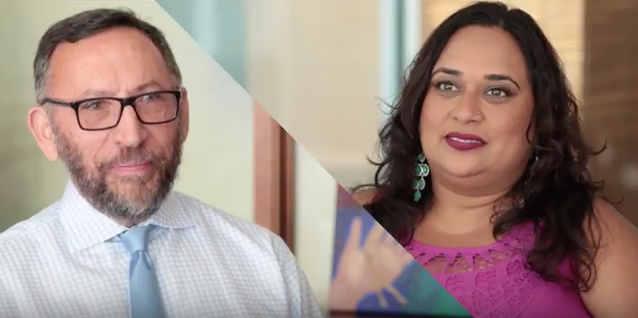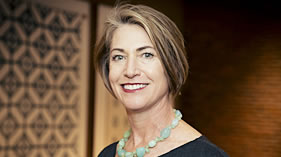
Philanthropy Lessons: Who Knows More?
[This article was first published here on our partners Exponent Philanthropy’s site]
Let’s say you own a company that makes energy bars. You wouldn’t dream of releasing a new product line without seeing if your fitness-focused target buyers liked it. Similarly, a foundation should not launch a new grant program without checking in with the intended recipients to see if it’s what they really need.
Why don’t foundations check in with their customer base more often? Unlike the energy bar company, foundations don’t have to “sell” their grants—they are pretty much guaranteed that there is a market for grant dollars out there. But just because people ask for grants, it doesn’t mean that grant dollars are being deployed in the most useful, impactful way. Seeking feedback is key.
Today, Exponent Philanthropy released the latest video in its Philanthropy Lessons series: Philanthropy Lessons: Who Knows More? If we give ourselves license to learn from our grantees and the people they serve, we can be more effective. Hear from leading philanthropists about building respect and trusting the people who are working day in and day out with the complex issues we care about.
The Durfee Foundation has a longstanding practice of seeking the expertise of our grantees and the community when designing our grant programs. When we do this we learn whether ideas that may sound brilliant to our engaged board and small staff might actually be duds from the point of view of the nonprofit community we support.
I received an excellent lesson in humility recently. I was excited when a colleague told me about her idea for a grant program to help retiring baby boomer executive directors of nonprofits transition out of their roles and into consulting positions at other nonprofits. I thought this was genius. Not only did it address an issue that funders have been discussing for a long time—the need to smooth the transition of outgoing EDs and pave the way for new talent—but it provided wise counsel to mid-sized nonprofits in need of senior staff. Thinking that this was a program that Durfee could launch, I presented it to my board. They shared my enthusiasm and signed off on planning funding.
To test the idea, Durfee brought together 13 esteemed nonprofit leaders for a lunchtime focus group discussion in downtown Los Angeles. Our meeting facilitator laid out the program design, and we went around the room to get reactions.
No one liked it. A few people tried to be polite and say that they saw some possibilities, but the overwhelming response was that the program was too structured and did not allow for the many nuanced considerations of retirement.
Our skilled facilitator turned it into a more wide-ranging discussion about the issues facing executive directors when considering retirement—financial, organizational, societal, personal—and how those might be addressed. We didn’t arrive at any tidy answers in those two and a half hours, but we learned first-hand that this is a complex issue that requires a lot more work on our part before we jump into it. We continue to do that work.
The big takeaway for me was that if Durfee had launched this program without checking in as we did, we still would have gotten applications. During the lunch, I could see the EDs struggling to figure out how they could make this program work for them. Sadly, they have a lot of practice trying to fit their organizational needs into the often rigid requirements of well-meaning grant programs. Foundation A makes generous grants but only for the costs of direct service programs. Nonprofit B applies for this grant because they can make it work, even though what they really need is general operating support so they can restructure their staff and be more efficient at delivering services. Foundation A has no idea that its funding could be much more useful to Nonprofit B if it were not so strictly structured.
Here are some tips for maximizing the impact of your grants by getting authentic input from the people who really know what is needed.
Be aware of the power dynamic. It’s not easy to get honest feedback from people who are keenly aware that you have the power to give or withhold money. Acknowledge this and do what you can to diminish it, such as by heeding to the point below.
Create an environment of trust and respect. Don’t tell people that you want feedback if what you are really seeking is applause. Approach them with true respect for their deep field knowledge, listen, take notes, and take action based on what they say.
Talk to your constituents regularly to learn what they really need. We are fortunate at Durfee that we have a group of nonprofit leaders we have supported over the years that we can turn to for honest feedback. Durfee hosts regular retreats for these leaders where we can learn what is on their minds and what they really need from funders.
Stay open-minded; don’t get too wedded to your own ideas. In retrospect, it would have been a lot better if we had simply asked, “We’ve been thinking about the wave of baby boomer ED retirements and wondering how a funder can be helpful. We’d love to hear your ideas. What are they?”
Listening deeply to the people in the community who are closest to the issues we care about is the most important work that a funder can do to ensure that its resources are put to their best use.
Carrie Avery is president of The Durfee Foundation in Los Angeles, California, which focuses on leadership by providing fellowships, grants to new grassroots organizations with dynamic leadership, and sabbaticals to longtime nonprofit leaders. She serves on the boards of Grantmakers for Effective Organizations in Washington, D.C., the RGK Foundation in Austin, Texas, and the Berkeley Repertory Theater in Berkeley, California. She is a past board chair of the National Center for Family Philanthropy and Northern California Grantmakers, and co-chaired the board of the Lawyers’ Committee for Civil Rights in San Francisco.
for Effective Organizations in Washington, D.C., the RGK Foundation in Austin, Texas, and the Berkeley Repertory Theater in Berkeley, California. She is a past board chair of the National Center for Family Philanthropy and Northern California Grantmakers, and co-chaired the board of the Lawyers’ Committee for Civil Rights in San Francisco.